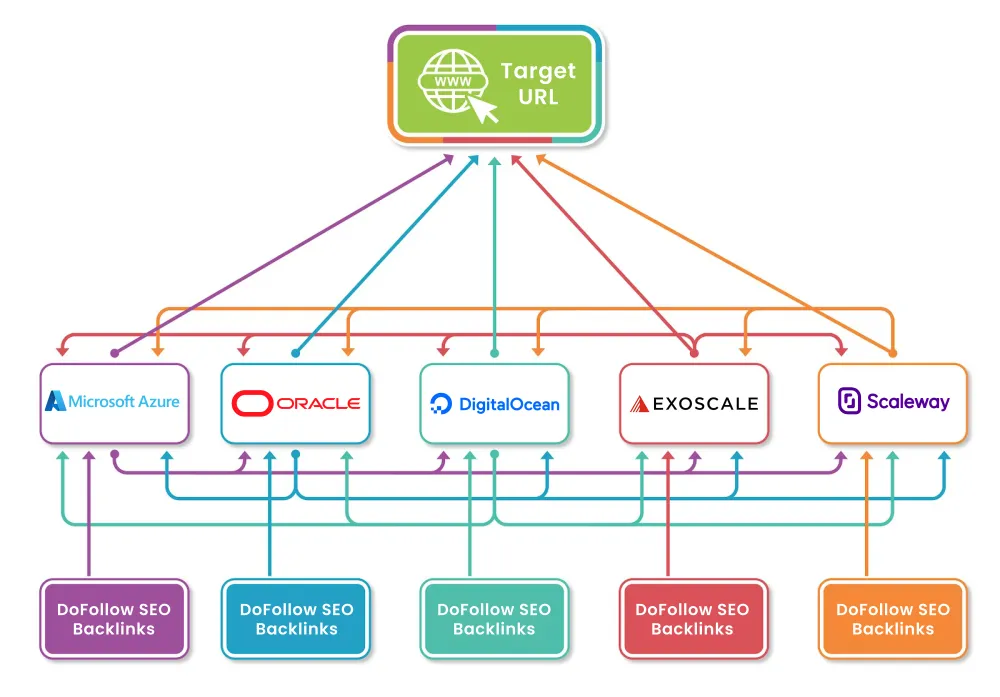LinkDaddy Cloud Services Press Release: Exclusive Announcements
LinkDaddy Cloud Services Press Release: Exclusive Announcements
Blog Article
Recognizing the Different Types of Cloud Providers and Their Uses
In today's electronic landscape, the world of cloud computing uses a varied array of solutions that deal with the needs of services and people alike. From Facilities as a Service (IaaS) to Software Application as a Solution (SaaS), each kind of cloud service serves a distinct objective and offers unique benefits. Recognizing the distinctions between these various cloud models is vital for maximizing procedures, enhancing scalability, and ensuring cost-efficiency in an increasingly interconnected world. By discovering the nuanced functionalities and applications of each cloud service, one can navigate the intricacies of cloud computer with accuracy and insight.
Facilities as a Solution (IaaS)
Infrastructure as a Solution (IaaS) provides users with virtualized computer sources online on a pay-as-you-go basis. This cloud computer version supplies essential IT framework such as digital makers, storage, and networking without the need for companies to purchase and manage physical web servers and information centers. With IaaS, users can scale sources up or down based upon their demands, offering adaptability and cost-efficiency.
Among the essential benefits of IaaS is its capacity to quickly provision and release facilities components, enabling organizations to respond quickly to transforming needs and market conditions. By contracting out facilities management to the provider, companies can concentrate more on their core organization tasks as opposed to dealing with the intricacies of hardware upkeep and upgrades.
In addition, IaaS uses a high level of reliability and security, with service providers generally offering durable data back-up, catastrophe recovery, and cybersecurity measures. This aids make sure that vital company operations continue to be continuous and information continues to be shielded against possible dangers. universal cloud Service. Generally, Infrastructure as a Solution simplifies IT operations, boosts scalability, and reduces capital investment for services of all sizes
Platform as a Solution (PaaS)
Structure upon the structure of Infrastructure as a Service (IaaS), Platform as a Solution (PaaS) uses a thorough environment for developers to develop, release, and manage applications without the complexities of underlying infrastructure monitoring. PaaS provides a system with devices and services that improve the advancement process, enabling developers to focus on writing code and building applications as opposed to managing framework problems.

Software Application as a Service (SaaS)
Software Program as a Service (SaaS) transforms the means services access and make use of software applications by supplying them on a membership basis through cloud service providers. This cloud computer design eliminates the demand for organizations to install and keep software application on individual tools, as everything is organized and handled centrally in the cloud.
SaaS supplies an economical remedy for organizations as they only pay for the software they use without the added expenditures of hardware maintenance or software updates. It also supplies scalability, permitting companies to conveniently adjust their software program demands based on their requirements.
Furthermore, SaaS applications can be accessed from any gadget with a net connection, advertising collaboration and versatility amongst remote teams. Protection is a top concern in SaaS, with companies carrying out durable measures to protect data kept in the cloud.
Popular examples of SaaS include client connection administration (CRM) software application like Salesforce, efficiency tools like Microsoft Office 365, and find here collaboration platforms like Google Work area. SaaS remains to acquire traction in the service world because of its scalability, cost-efficiency, and benefit.
Feature as a Service (FaaS)
With the advancement of cloud services like Software program as a Service (SaaS) enhancing software application delivery, Function as a Solution (FaaS) represents a standard shift in just how code is performed in a serverless environment. FaaS permits developers to compose and carry out private functions or items of code in action to particular events without the demand to handle the infrastructure. This serverless computer design enables developers to concentrate entirely on writing code to carry out particular performances, without concerning themselves with the underlying facilities or server monitoring.
Among the essential advantages of FaaS is its capability to scale instantly based on the inbound workload. Features are implemented in stateless containers that are spun up and down as required, making sure ideal resource use and cost-effectiveness. FaaS is especially advantageous for event-driven and microservices architectures, where code implementation is activated by occasions such as review HTTP requests or data source updates. By abstracting the framework layer, FaaS simplifies growth, accelerates time to market, and improves overall dexterity in releasing cloud-native applications.
Storage Space as a Service (STaaS)
A basic component in cloud computing, Storage space as a Solution (STaaS) offers users with a reliable and scalable solution for handling information storage space requirements. STaaS allows organizations to keep and fetch data from remote servers by means of the net, removing the need for on-premises hardware. This solution supplies flexibility by allowing individuals to pay just for the storage space they make use of, making it an affordable option for organizations of all dimensions.

STaaS is particularly beneficial for businesses with fluctuating storage space needs, as it supplies a safe and dependable storage solution without the demand for considerable in advance investments. By leveraging STaaS, companies can simplify their information management processes, improve access, and boost data safety and security in a cost-effective manner.

Verdict
In final thought, recognizing the different types of cloud services and their usages is essential for people and organizations looking to leverage the benefits of cloud computing. By utilizing the best cloud solution, companies can boost their performance, scalability, and adaptability in handling their IT infrastructure and applications.
From Infrastructure as a Service (IaaS) to Software as a Service (SaaS), each type of cloud service find out serves a distinct purpose and offers unique advantages. linkdaddy cloud services press release. By discovering the nuanced capabilities and applications of each cloud solution, one can browse the intricacies of cloud computing with precision and foresight
With the development of cloud services like Software as a Solution (SaaS) streamlining software distribution, Function as a Solution (FaaS) represents a standard change in exactly how code is carried out in a serverless atmosphere.In final thought, understanding the different kinds of cloud solutions and their uses is vital for companies and individuals looking to take advantage of the benefits of cloud computing. By making use of the ideal cloud service, companies can improve their effectiveness, scalability, and flexibility in handling their IT facilities and applications.
Report this page